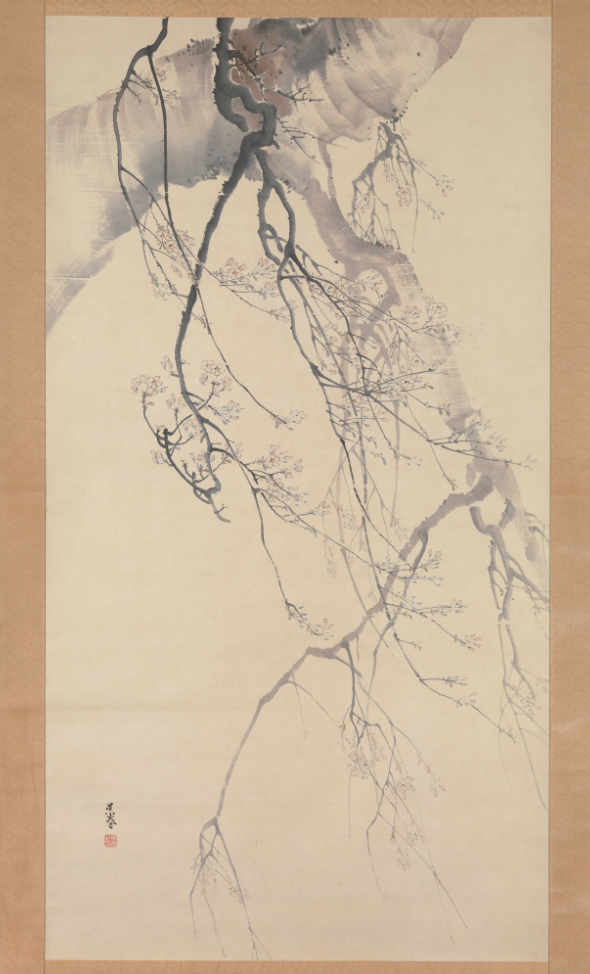Teach This Poem is a weekly series featuring a poem from our online poetry collection, accompanied by interdisciplinary resources and activities designed to help K-12 teachers quickly and easily bring poetry into the classroom.

by Matsumura Goshun (Japanese, 1752–1811). Date: 18th century. Medium: Hanging scroll; ink and color on paper. Dimensions: 69 x 37 7/8 in. Credit line: The Harry G. C. Packard Collection of Asian Art, Gift of Harry G. C. Packard, and Purchase, Fletcher, Rogers, etc. metmuseum.org.
The following activities and questions are designed to help your students use their noticing skills to move through the poem and develop their thinking about its meaning with confidence, using what they’ve noticed as evidence for their interpretations. Read more about the framework upon which these activities are based.
- Warm-up (quick write and pair share): Quickly write down a list of your associations with the phrase ancient beauty. Try not to edit yourself during this exercise; focus instead on writing whatever comes to mind. When you have finished, edit your list down to two or three appropriate associations. Share these with a partner.
- Before Reading the Poem (quick write and small-group discussion): Look very closely at the image of the hanging scroll from 18th century Japan. Write down what you notice when you look at the image from a distance and when it is enlarged. What descriptive words seem to capture the essence of the cherry blossoms in this image? Share what you have noticed in a small group with your partner and another pair of students.
- Reading the Poem (individual reading): Read the poem by Toi Derricotte silently, then write down the words and phrases that jump out at you.
- Listening to the Poem (enlist two volunteers to read the poem aloud): Listen as the poem is read aloud twice and write down any additional words and phrases that jump out at you.
- Small-group Discussion: Share the words and phrases that you noticed in the poem with the rest of your small group. How do these words and phrases relate to the image of the painting of cherry blossoms, if at all? Be prepared to use this information in a whole-class discussion.
- Whole-class Discussion: How do you think the speaker in the poem feels about the cherry blossoms she sees? What is your evidence? With what does the speaker in the poem compare the cherry tree and its blossoms? Think back to the warm-up and the painting. What thoughts might the speaker in the poem have about “ancient beauty”?
- Extension Grades 7-8: Write a paragraph or a poem about something you think has an “ancient beauty.” Be sure to use adjectives, similes, and metaphors to help the reader understand the unique beauty of this object. (Teachers, if you have not yet taught about adjectives, similes, or metaphors, this would be a good opportunity to do so.)
- Extension for Grades 9-12: Blossoming cherry trees were introduced to the United States from Japan in the early 1900s. What can you learn about cherry blossoms, or sakura, in Japanese culture? What can you learn about the introduction of these trees to the United States? Conduct research to find out the answers to these questions, then write an essay telling the story of the trees. Make sure to include what you think the importance of these trees is today.
More Context for Teachers
In her essay “The Bond of Living Things: Poems of Ancestry,” Toi Derricotte writes, “In the end, our connection to the past is more than a personal connection; it places us within a lifeline that extends before and beyond us, it places and holds us between the wings of something vast and eternal.” Read more.
